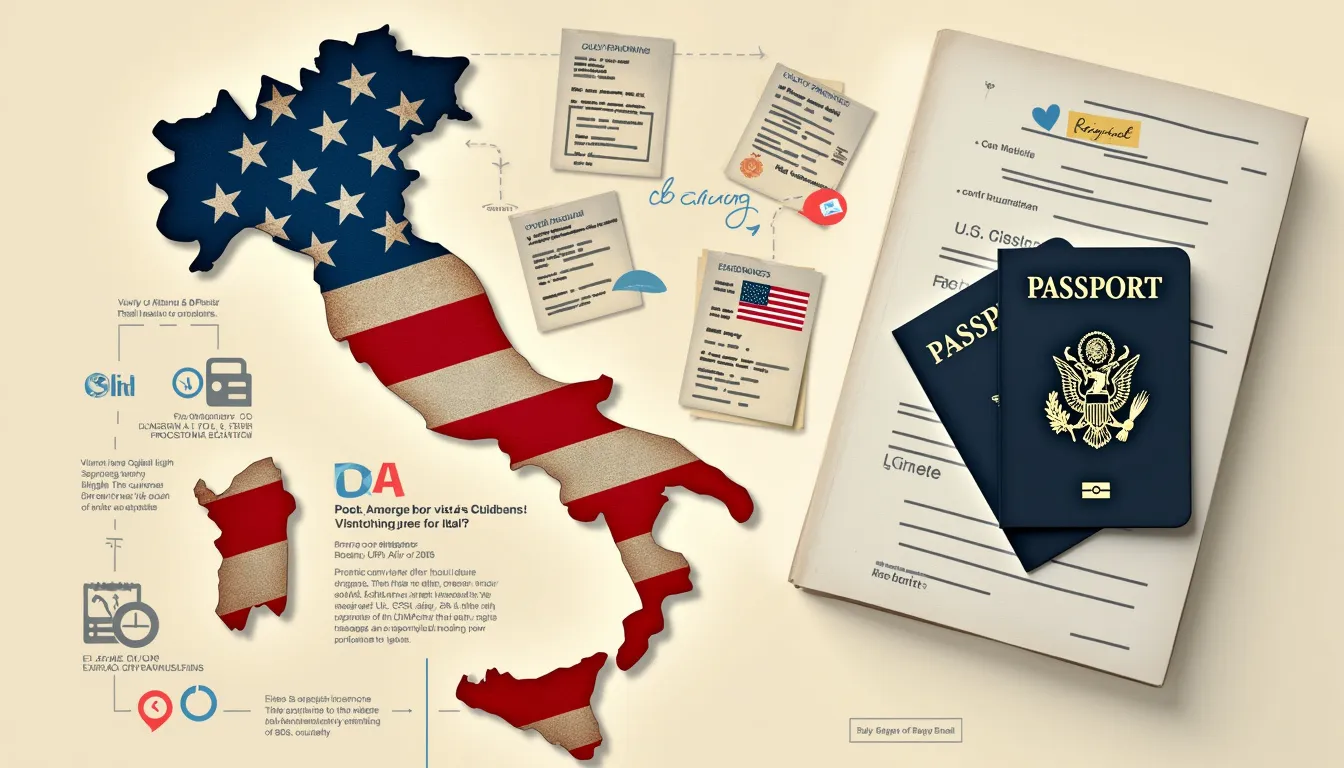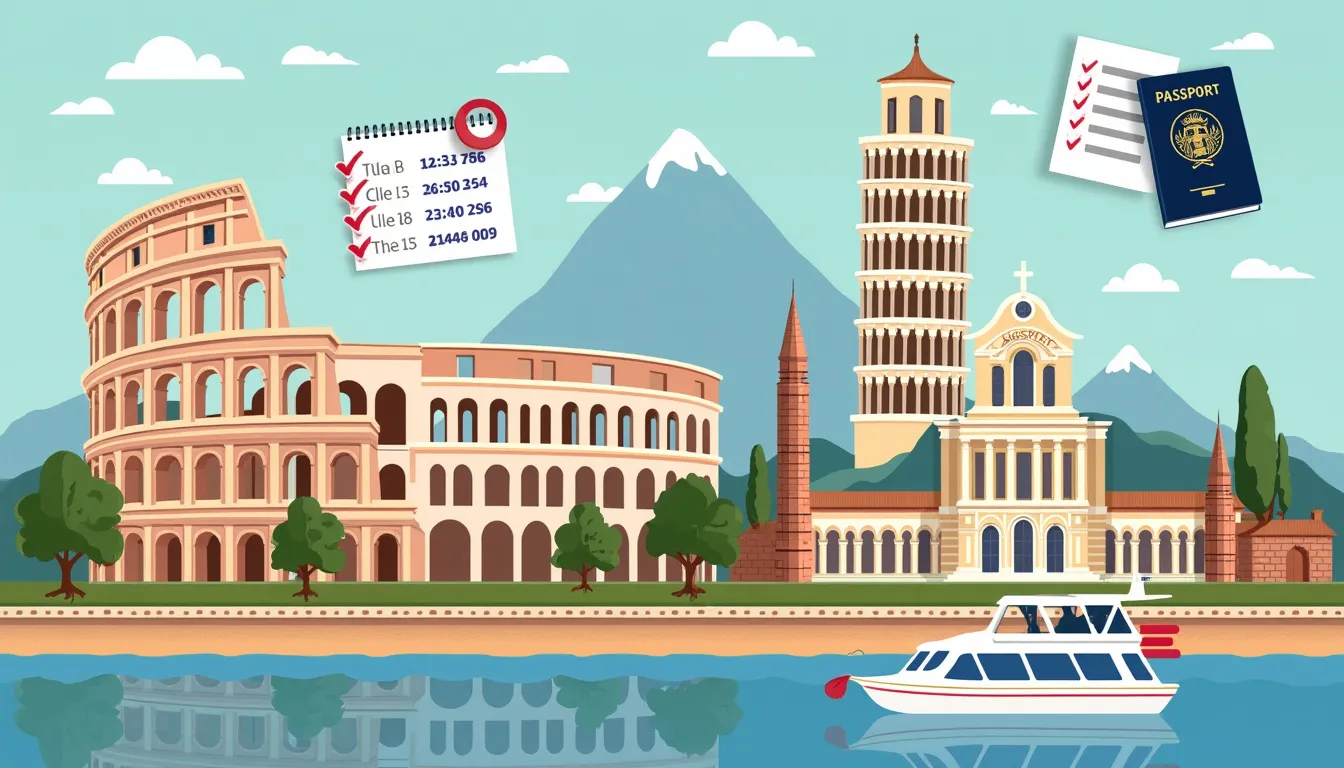Planning a dream vacation or an important business trip to the breathtaking country of Italy? Before you pack your bags and book your flights, it’s crucial to understand whether you need a visa to travel to Italy. Navigating the intricate world of visa regulations can be daunting, but this comprehensive guide will help clarify the process and ensure your journey to Italy is smooth and hassle-free.
Italy, a member of the European Union (EU) and the Schengen Area, has specific visa requirements and policies for travelers based on various factors such as nationality, duration of stay, and the purpose of visit. This article will delve into the essential details you need to know about Italy’s visa requirements, including country-specific guidelines and the step-by-step process for obtaining a visa.
For travelers from different parts of the world, knowing whether you need a visa to enter Italy can save you from last-minute surprises and complications. We will explore the visa policies for citizens of the U.S., Canada, Australia, and EU/EEA/Swiss countries, as well as requirements for travelers from non-EU/Schengen nations. Additionally, we will provide a detailed guide on how to apply for a visa to Italy, covering key documents, fees, and tips for a successful application.
Stay informed and prepare accordingly by reading on to determine if you need a visa for your Italian adventure, ensuring a seamless and enjoyable experience in one of the most enchanting destinations on the planet.
Understanding Visa Requirements for Italy
Overview of Visa Policies for Travelers
If you’re wondering Do you need visa to travel to Italy?, the answer depends on various factors such as your nationality, the purpose of your visit, and the duration of your stay. Italy, being a member of the European Union (EU) and part of the Schengen Area, has specific visa regulations that align with broader European policies. The Schengen Agreement facilitates free movement between member countries but also necessitates stringent visa controls for non-member states.
For short stays of up to 90 days within a 180-day period, Italy follows the Schengen visa policy. This means that travelers from non-Schengen countries generally require a short-stay Schengen visa, unless they qualify for a visa waiver through bilateral agreements. The Schengen visa allows visitors to travel across multiple Schengen Area countries, making it a flexible option for tourists and business travelers alike.
Key Factors That Determine Visa Necessity
Several critical factors determine whether you will need a visa to travel to Italy. These include:
- Nationality: Your country’s visa treaty agreements with Italy significantly affect your visa requirements. Citizens of the EU, EEA, Switzerland, and certain other countries enjoy visa-free entry for short-term visits.
- Duration of Stay: The length of your stay is pivotal. Short stays under 90 days may not require a visa for nationals of specific countries, whereas longer stays will typically necessitate a visa regardless of nationality.
- Purpose of Travel: The intent of your visit—be it tourism, business, study, or work—will determine the type of visa you will need. For instance, tourists may need a short-stay Schengen visa, while students and workers will require long-stay visas or residence permits.
These factors interact in various ways to determine whether you need a visa to enter Italy. It’s essential to review the specific visa requirements that apply to your nationality and situation before making travel plans.
Common Scenarios Where a Visa Is Required
To further clarify your understanding of visa requirements for Italy, here are some typical scenarios highlighting when a visa is necessary:
- Non-Schengen Country Citizens: Travelers from countries that are not part of the Schengen Area, such as India, China, and South Africa, will generally need a Schengen visa for short stays. This visa must be obtained before departure, through an Italian consulate or embassy in their home country.
- Travelers Exceeding 90 Days: Regardless of nationality, if your stay in Italy will exceed 90 days within a 180-day period, you will be required to apply for a long-stay visa or a residence permit. This rule applies to everyone, including citizens of visa-exempt countries.
- Specific Travel Purposes: If you are traveling to Italy for purposes other than tourism, such as to work or study, you will need to apply for the appropriate type of visa. Business travelers attending meetings and conferences might need a short-stay Schengen visa, whereas individuals seeking employment will require a work visa.
It’s imperative to recognize that the requirements for each visa type may vary significantly, and securing the correct visa ensures a smooth entry into Italy. Additional documents and processes will vary depending on the visa category and your specific circumstances. Therefore, careful preparation and research are essential to avoid any potential issues upon arrival.
In summary, understanding visa requirements for Italy is a multi-faceted process that hinges on your nationality, the length of your stay, and the purpose of your visit. Whether you’re planning a short vacation or an extended stay, familiarize yourself with Italy’s visa policies and determine if you need a visa to enter the country. This ensures you have the right documentation and can focus on enjoying your Italian adventure.

Country-Specific Visa Requirements for Italy
Visa Guidelines for Citizens of the U.S., Canada, and Australia
If you’re wondering, do you need a visa to travel to Italy as a citizen of the United States, Canada, or Australia, the answer is generally no for short stays. Citizens of these countries can travel to Italy for tourism, business, or family visits without a visa for up to 90 days within a 180-day period under the Schengen Agreement. It’s important, however, to ensure that your passport is valid for at least six months beyond your intended stay and that you have sufficient funds for your trip as well as travel insurance that covers medical emergencies.
For those planning to stay longer than 90 days or who wish to work, study, or reside in Italy, a visa will be required, and different criteria will apply based on the purpose of the visit. It’s advisable to contact the nearest Italian consulate or embassy for detailed application processes and requirements for long-term visas.
Visa Policies for EU/EEA/Swiss Citizens
EU, EEA, and Swiss citizens enjoy the freedom of movement within the EU, and as such, do you need a visa to travel to Italy is not a question these travelers need to worry about for short or long stays. Citizens of these countries can enter, reside, study, and work in Italy without the need for a visa, reflecting the principles of the European Union’s goal of facilitating seamless travel and living arrangements among its member states.
However, it’s still essential for EU/EEA/Swiss citizens to carry a valid passport or national ID card when entering Italy. If they plan to stay longer than three months, they are required to register with the local authorities and may need to apply for residency.
Visa Requirements for Travelers from Non-EU/Schengen Countries
For travelers coming from non-EU and non-Schengen area countries, the question, do you need a visa to travel to Italy, often results in an affirmative answer. Travelers from these regions generally need to apply for a Schengen visa for short stays (up to 90 days within a 180-day period) for purposes such as tourism, business, or transit.
The Schengen visa permits travel across other Schengen area countries, but the application must detail the primary country of entry and stay—which in this case is Italy. Key documents required typically include a valid passport (with at least two empty visa pages and validity extending three months past the end of the trip), proof of accommodation, round-trip flight itinerary, travel insurance covering medical emergencies up to €30,000, and proof of sufficient finances.
For long-term stays, activities such as employment, study, or residency, travelers from these countries need an appropriate national visa. This process involves more extensive documentation and often requires directly contacting the Italian consulate or embassy in their home country for precise guidance on the documents, fees, and procedural requirements.
The Schengen visa application can typically be submitted no more than six months before the intended travel date, and it’s recommended to apply at least 15 days in advance to allow for processing time. The standard processing fee for a Schengen short-stay visa is €80, although some nationalities and categories (like children, students, or diplomatic passports holders) may be eligible for reduced fees or exemptions.
For travelers uncertain about specific requirements, consulting the Italian Ministry of Foreign Affairs website or contacting their nearest Italian embassy can provide all necessary details and ensure compliance with entry regulations, thereby contributing to a smooth and enjoyable trip to Italy.

How to Apply for a Visa to Italy
Step-by-Step Guide to the Visa Application Process
If you’re wondering, do you need a visa to travel to Italy, and the answer is yes, the next step is understanding the application process. The following is a step-by-step guide to make the visa application process smooth and straightforward:
- Determine the Type of Visa You Need: Italy offers various types of visas including tourist, business, student, and transit visas. Identify the visa type that matches the purpose of your visit.
- Gather Information: Visit the official website of the Italian consulate or embassy in your country to get updated information on visa requirements. Paying attention to visa categories, processing times, and local regulations is crucial.
- Complete the Visa Application Form: Download and fill out the visa application form accurately. Ensure that all details match the information in your travel documents.
- Schedule an Appointment: Book an appointment for your visa interview/appointment at the nearest Italian consulate or visa application center. Slots can be limited, so plan well in advance.
- Submit Your Application: On the day of your appointment, submit the completed application form along with all required documentation. Be prepared to answer any questions by the consulate officer regarding your trip.
- Pay the Visa Fee: Fees vary depending on the type of visa and your nationality. Make sure to confirm the payment methods accepted at the consulate or visa center.
- Wait for Processing: The visa processing time can range from a few days to a few weeks. Track the status of your application online if the service is available.
Essential Documents and Fees
When applying for an Italian visa, having all the required documents is essential to avoid any delays or rejections. Here’s a checklist of the essential documents you’ll need:
- Completed Visa Application Form: Ensure the form is duly filled and signed.
- Passport: Your passport should be valid for at least three months beyond your planned stay in Italy and have at least two blank pages.
- Photographs: Two recent passport-sized photos that meet the Schengen visa photo requirements.
- Travel Insurance: Proof of travel insurance with minimum coverage of €30,000 for medical emergencies, accidents, and repatriation.
- Flight Itinerary: A copy of your round-trip flight reservation or itinerary.
- Proof of Accommodation: Hotel bookings, a letter of invitation from a host, or proof of other accommodation arrangements.
- Financial Means: Bank statements, proof of income, or other financial documents that demonstrate you have sufficient funds to cover your stay in Italy.
- Employment Documents: A letter from your employer stating your job position, salary, and permission for leave of absence. Self-employed individuals may provide business registration documents and tax returns.
- Additional Documents: Depending on your visa type and personal circumstances, you might need additional documentation such as enrollment letters for students, business invitations, etc.
Visa Fees: The visa fees can vary based on your nationality and the type of visa you are applying for. Typically, a short-stay visa (Type-C) is around €80 for adults and €40 for children between 6 and 12 years old. Make sure to check the current fee from the consulate or embassy website.
Tips for a Successful Visa Application
Applying for a visa can be a daunting task, especially if it’s your first time. Here are some tips for a successful Italian visa application:
- Start Early: Apply for your visa well in advance of your planned travel date. Processing times can vary, and starting early minimizes the risk of delays.
- Be Thorough and Honest: Fill out all required information accurately and honestly. Any discrepancies or inaccuracies could lead to delays or denial of your visa.
- Double-Check Documents: Ensure all documents are current and meet the consulate’s requirements. Organize them in the order specified by the application guidelines.
- Provide Clear Copies: When submitting copies of your documents, make sure they are clear and legible. Poor quality copies can cause processing delays.
- Proof of Purpose: Clearly demonstrate the purpose of your visit through supporting documents like invitation letters, conference tickets, or enrollment confirmation letters.
- Financial Stability: Show sufficient proof of financial means to cover your trip. This is often a critical factor in the approval process.
- Follow Up: After submitting your application, keep track of its status and be responsive to any additional requests for information from the consulate.
Following these steps and tips diligently can greatly enhance your chances of securing a visa, enabling you to enjoy your travel to Italy with peace of mind.
In conclusion, determining whether you need a visa to travel to Italy hinges on several important factors, such as your country of citizenship, the length and purpose of your stay, and the current visa policies that pertain to your specific scenario. While citizens from the U.S., Canada, and Australia may enjoy short-term, visa-free travel under certain conditions, travelers from non-EU/Schengen countries often face more stringent requirements. EU, EEA, and Swiss citizens benefit from the freedom of movement, negating the need for a visa entirely. For those who do need a visa, understanding the step-by-step application process, gathering the necessary documents, and preparing for potential fees are crucial for a successful application. By thoroughly assessing these aspects and planning ahead, you can ensure a smooth and hassle-free journey to Italy.







